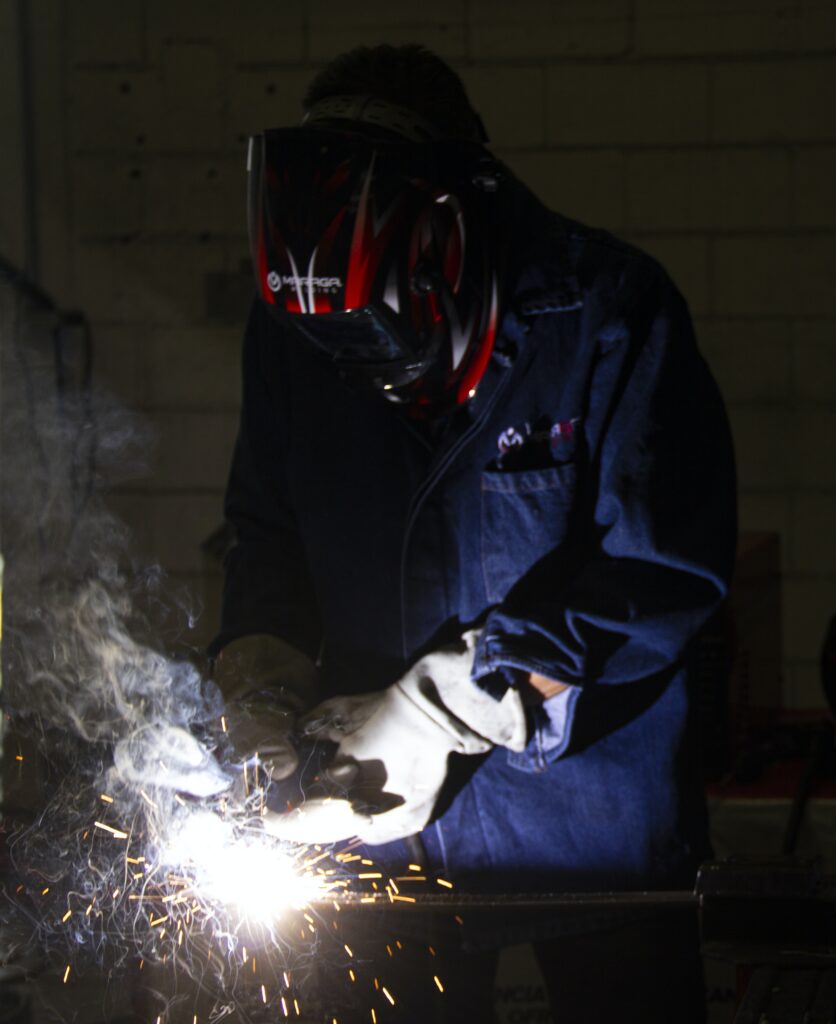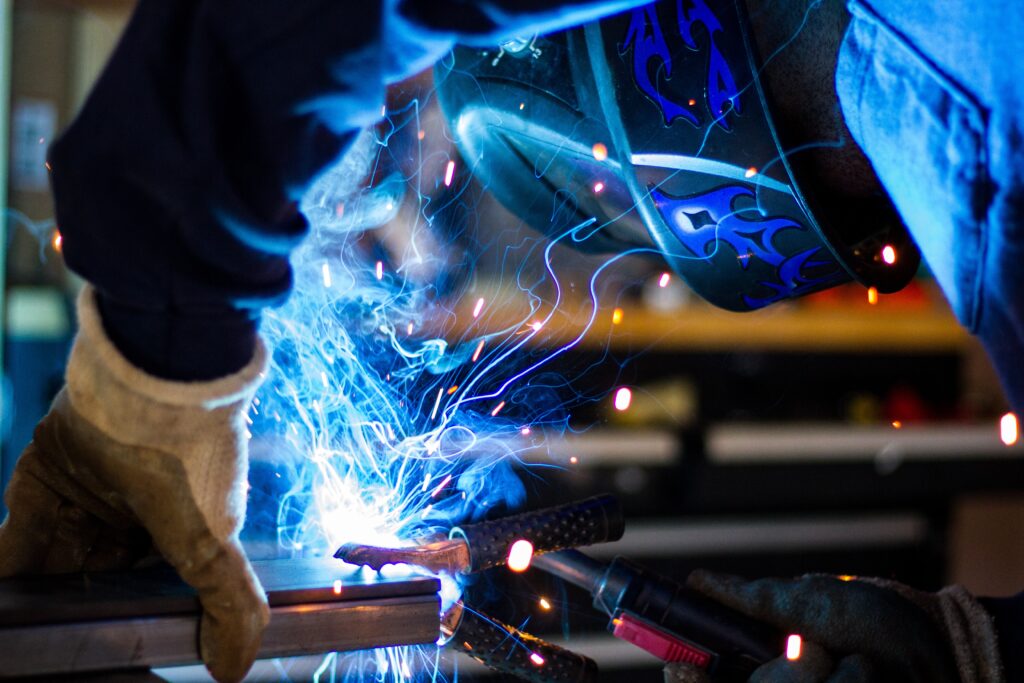Imagine you’re flipping through the pages of a new study titled “Are Welders Declining?” This in-depth piece offers you insightful analysis, hard-hitting facts, and answers to your queries about the current status of the welding profession. With a primary focus on industrial change, job market trends, and future projections, this fantastic resource sheds light on whether the demand for this essential skill is indeed decreasing. Brace yourself for a fascinating journey through the world of welding. Whether you are an industry veteran, a novice, or someone who’s merely curious about this topic, this article can certainly enrich your knowledge and perspective.

Understanding the Welding Industry
Brief overview of the welding industry
When you think of basic needs, food, clothing, and shelter usually come to mind. Yet in this technologically driven world, there’s a fundamental component that makes modern society possible – welding. The welding industry is a crucial part of nearly every manufacturing sector – from automobiles and ships to buildings and bridges, everywhere you look, the work of welders is plainly visible. In essence, welding is a fabrication process that involves the joining of materials, usually metals or thermoplastics, by using high heat to melt the parts together.
Types of welding jobs
The welding industry is broad, encompassing various job roles that vary greatly in nature. You could be a welder, a cutter, a solderer, or a brazer. Welders predominantly join metal parts together, whereas cutters use heat to break them apart. Solderers and brazers, on the other hand, use hotter temperatures to work with metal components, but on a more detailed and delicate scale. Yet even within each of these categories, there are numerous specialties. For instance, underwater welders take on high-risk jobs, repairing key components of underwater structures.
Importance of welding in various industries
From construction and automobile manufacturing to aerospace and military applications, welding is integral to numerous industries. It helps shape buildings that define our cities, cars that speed up our commute, planes that take us overseas, and military equipment that protects our nations. Not only does it directly contribute to these sectors, but it also bolsters the functioning of secondary sectors like logistics and transport.
Historical Evolution of the Welding Industry
Early history and development of welding
The roots of welding can be traced back thousands of years – from the Bronze Age, where the process of ‘forge welding’ was first introduced, through the Middle Ages, where blacksmiths refined the process, adding in elements such as pressure and heat to get the desired results. During the Industrial Revolution, welding took a quantum leap forward, with technological advancements aiding the birth of processes like arc welding and oxyfuel welding.
Major innovations and their impact on the industry
There have been multiple significant innovations that have dramatically reshaped the welding industry. One notable invention is ‘arc welding’, brought about by the advent of electricity in the late 19th century. This technological breakthrough allowed for more precise, durable, and mass-produced welds. Later developments such as the introduction of inert gases for MIG and TIG welding further enhanced this precision and opened up new opportunities for the welding industry.
Transition from manual to automated welding
The last few decades have brought about a key transition in the welding industry – automation. Initial resistance to the idea gradually eased as manufacturers saw the benefits of better accuracy, speed, and efficiency. Today, automated welding has gained extensive recognition, especially in industries such as automobile manufacturing that demand high volumes and consistent quality.

Present State of the Welding Industry
Current employment statistics
Currently, the welding industry represents a substantial portion of the labor market, with over half a million welders employed in the United States alone. However, this number shows signs of dipping as the current workforce ages and fewer younger individuals choose welding as a career.
Key industry players and market competition
Leading players in the welding industry line up the likes of Lincoln Electric, Colfax Corporation, and Illinois Tool Works. These companies constantly vie for market dominance, throwing in innovations and product improvements to maintain their competitiveness, and in the process, driving the industry’s growth.
Predominant welding practices
In today’s welding landscape, practices like TIG and MIG welding dominate, accounting for a substantial portion of welding jobs done. These methods, known for their versatility and reliability, are used worldwide for a wide range of applications.
Factors Contributing to the Decline of Welders
Aging workforce and retirement
One of the primary factors contributing to the decline in welders is the aging workforce. Many current welders are on the brink of retirement, and there aren’t enough apprentices filling the rank to replace them.
Technological advancements and automation
The rise of automation and technological advancements are also part of the reason for the dwindling numbers. Automated welding machines can produce mass volumes of high-quality welds faster than humans can, and this efficacy has prompted many industries to lean into automation.
Introduction of alternative joining technologies
The introduction of new joining technologies that don’t require traditional welding, such as adhesives and clinching, has also reduced the demand for welders in some industries.
Stigma against manual labor jobs
There is a prevalent stigma against manual labor jobs, including welding. Many young people are pushed towards white-collar jobs or theoretical fields of study, at the expense of practical skill-based jobs like welding.

Impact of Declining Number of Welders
Effect on industries relying on welding
A lack of sufficient welders can lead to delays and potentially increased costs in industries reliant on welding. This ripple effect can impact everything from construction timelines to the availability of consumer goods.
Economic implications
The economic impact of a declining number of welders is wide-ranging. It can flag economic growth, deter foreign investments, and negatively affect the manufacturing industry, ultimately leading to a lower GDP.
Influence on job market and wage trends
The declining number of welders can, paradoxically, lead to an increased demand for this skill, resulting in higher wages for those who choose this career path. However, it could also mean a heavier workload for existing welders.
Role of Education in the Decline of Welders
Shift towards college-oriented education
The decline in welders can be partly attributed to the modern shift towards college-oriented education. More emphasis is placed on a formal university education, and less on vocational trades, which has led to fewer young people entering the welding industry.
Shortage of vocational training programs for welding
There is a notable shortage of vocational training programs for welding. Many schools have cut vocational training programs in recent years, leaving fewer options for those interested in pursuing these skills.
Perception of welding as a low skill job
There’s a growing perception that welders are low skill workers, further compelling young aspirants to direct their career paths away from welding. This perception is a significant factor in the lack of new blood entering the industry.
Automation in Welding
Rise of robotic welding
Robotic welding has grown exponentially in the past few decades. Offering better precision, uniformity, and speed compared to human welders, these machines have become an attractive option for industries with high production volumes and quality standards.
Impact of automation on the demand for human welders
While automation brings efficiency and speed, it has inevitably reduced the demand for human welders. Many businesses have turned to automation, causing a decreased need for traditional, manual welding.
Pros and cons of automated welding
Automated welding has many benefits, including increased production speed, better accuracy, and reduced errors. But it also has its downsides, such as high initial costs, less flexibility than a human worker, and the need for skilled technicians to maintain and program the machines.
Efforts to Curb the Decline in Welders
Initiatives by industry and educational institutions
Industries and educational institutions are taking initiatives to curb the decline in welders. These include efforts to popularize welding as a viable career path through marketing campaigns, increasing the number of vocational training programs, and providing scholarships for welding certifications.
Government policies to promote skilled trades
Government policies can play a huge role in promoting skilled trades like welding. Policies offering tax cuts for such businesses, grants for trade schools, or funding for apprenticeship programs can significantly encourage growth in this sector.
Changing societal attitudes towards manual labor jobs
Addressing societal attitudes towards manual labor jobs is also key to curbing the decline in welders. Celebrating the skill and craftsmanship involved in trades like welding can help shift the stigma and encourage more young workers to embark on these career paths.
Future of the Welding Industry
Predicted labor market trends
The current labor market trends predict a scattered scenario. Although there’s a clear downturn in the number of welding professionals, there’s an increased demand for the skill. Either way, welders of the future may likely need to be proficient not just in welding, but also in operating, programming and maintaining automated welding machines.
Potential technological advancements
Technological advancements could further transform the nature of welding work. For example, the advent of technologies like laser welding and friction-stir welding promise higher efficiency, precision, and versatility.
Strategies to attract the younger generation into welding
There are strategies the industry can use to attract the younger generation into welding. Offering competitive wages, improved working conditions, and showcasing the advanced technology used in modern welding can break the dated image of the industry and entice more youngsters.
Conclusion: Are Welders Really Declining?
Review of key arguments
While it’s clear that the number of traditional welders is on the decline, it’s not the end of the story. Changes in technology, the rise in automation, and changing societal norms are all contributing to a shift in what it means to be a welder.
Implications for the industry and economy
Though the current situation poses challenges, it also offers opportunities. With proper investment in education and training, promoting the importance of the trade, and adapting to technological progress, the industry can reposition itself for new growth.
Final thoughts on the future of welding
Are welders declining? Perhaps, but welding is not. Undeniably, the welding industry is experiencing significant change, as the ancient trade of forge welding that started centuries ago continues to transform and adapt to the evolving demands of our modern society.
